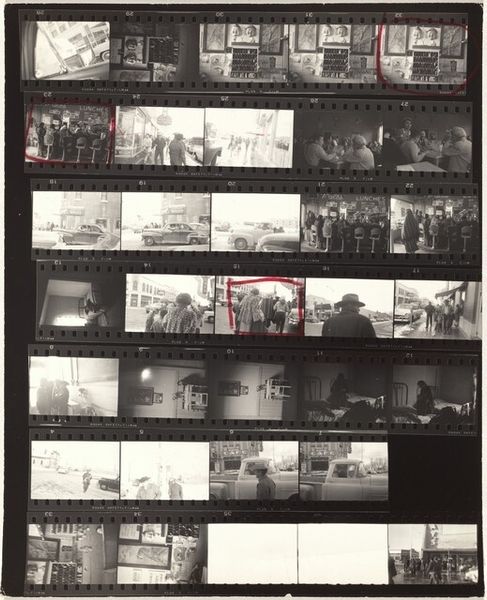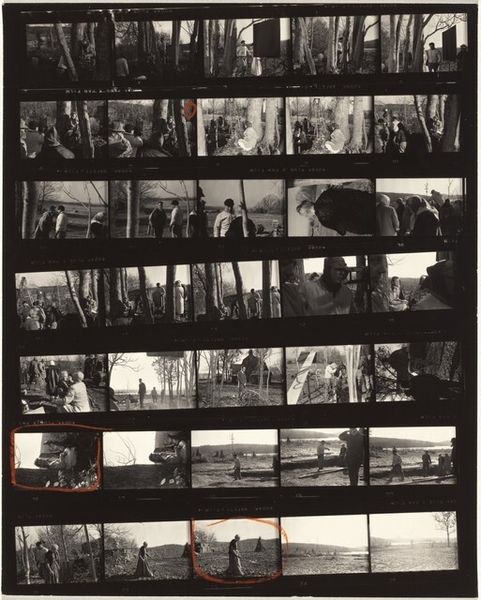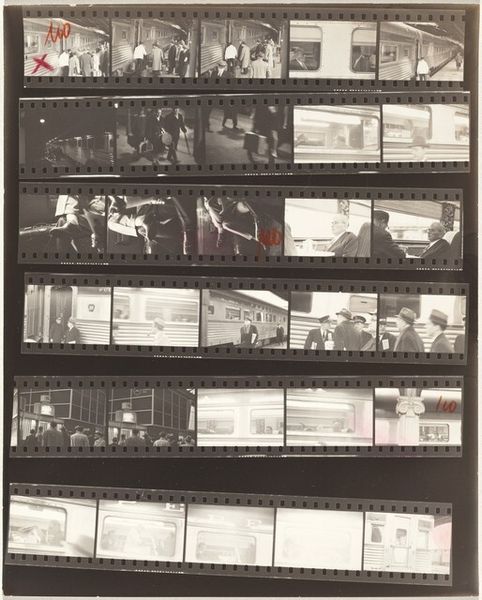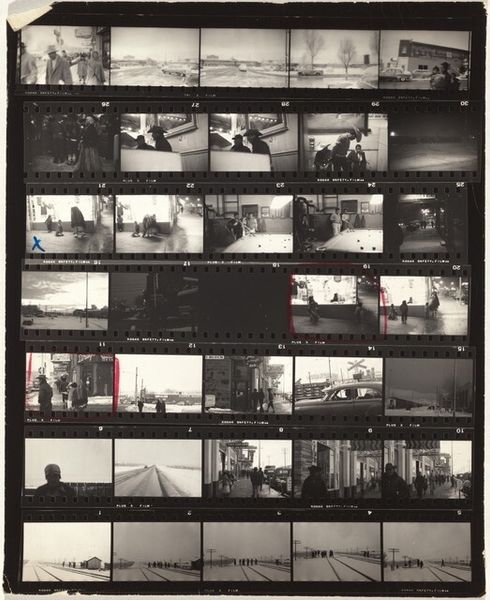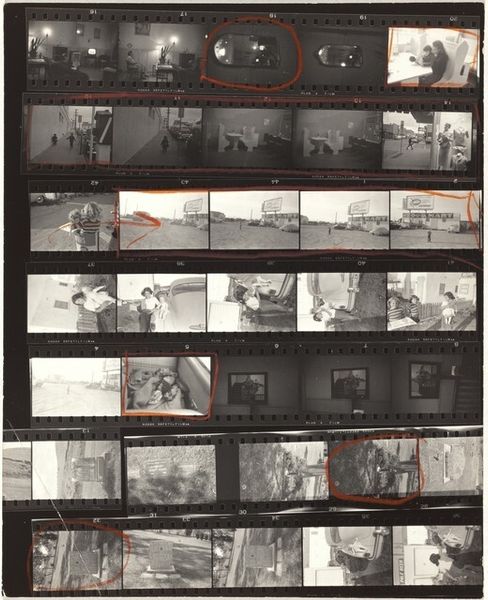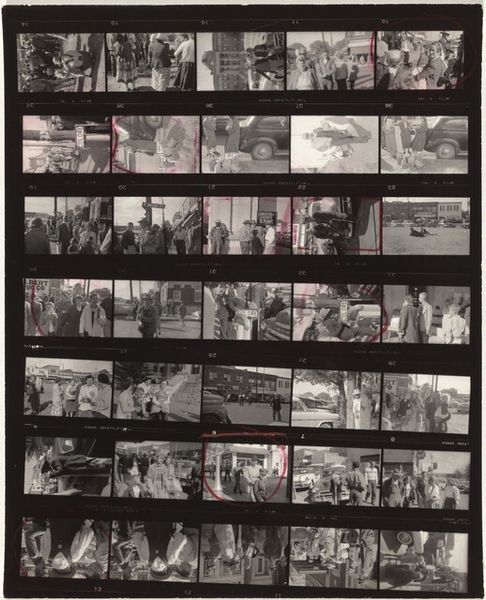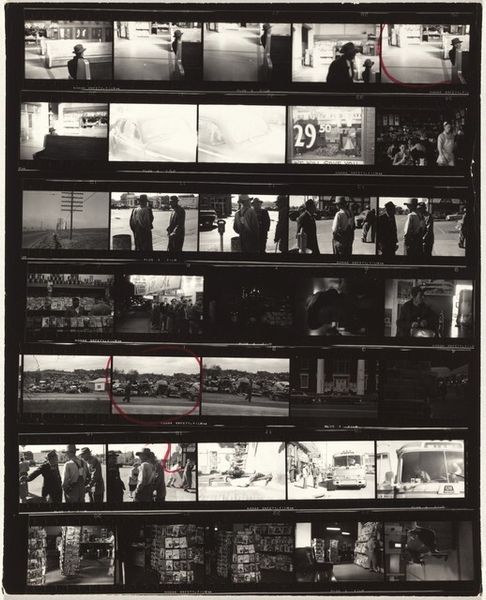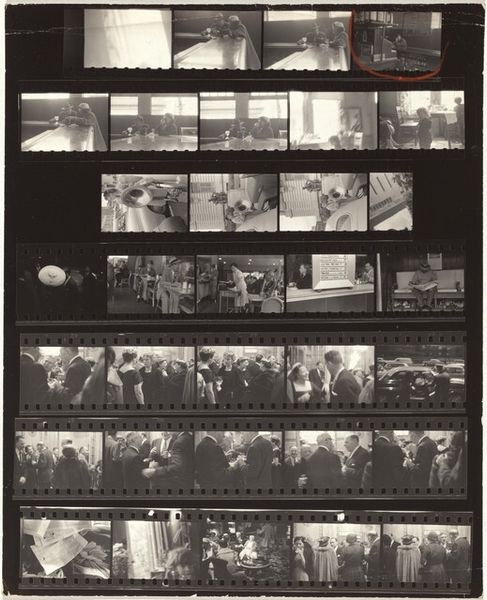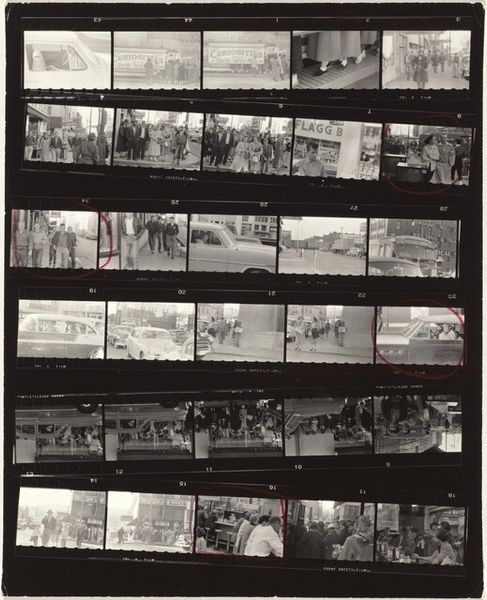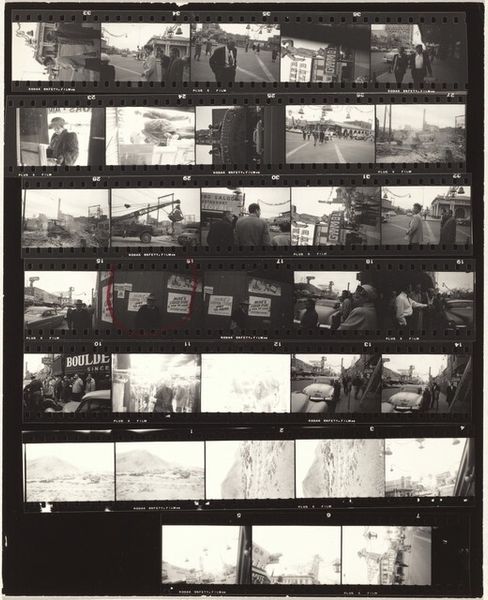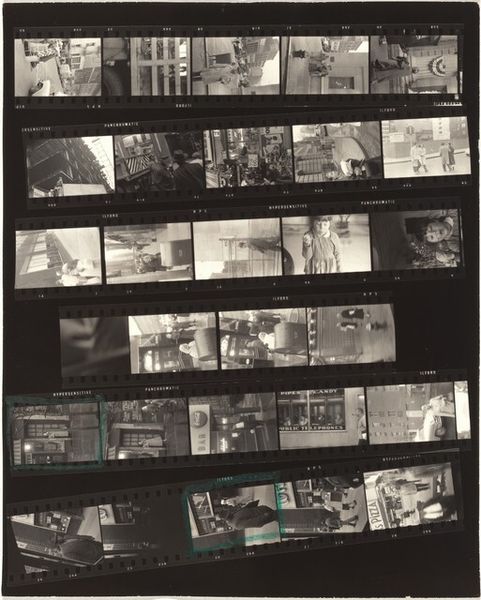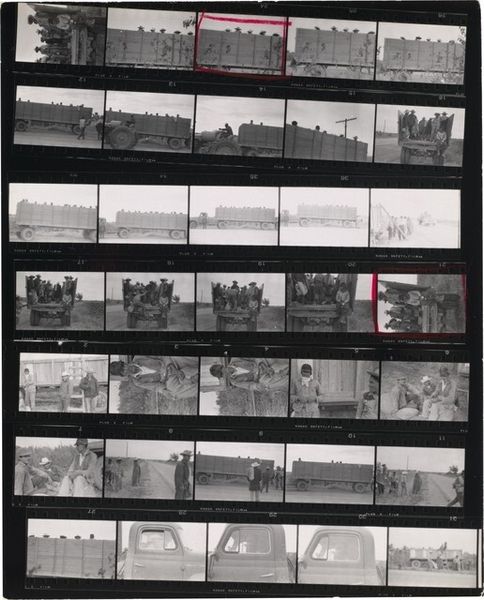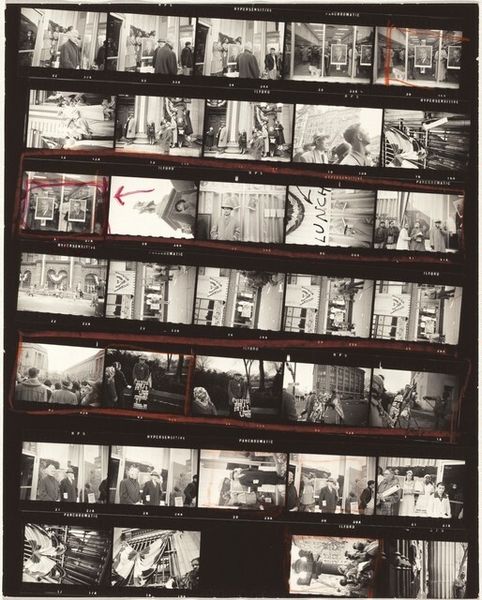
Dimensions: overall: 25.3 x 20.5 cm (9 15/16 x 8 1/16 in.)
Copyright: National Gallery of Art: CC0 1.0
Curator: This is Robert Frank's "Guggenheim 383--Gallup, New Mexico," shot in 1955, a work in which Frank meticulously captured images from his cross-country travels. It is composed as a full photography contact sheet, showing multiple frames. What’s your initial read? Editor: It feels very raw, almost like peering directly into the photographer’s process. The various scenes—a roadside diner, glimpses of people, desolate landscapes—create a strong sense of journey, and perhaps, alienation. The rough edges and visible film strip make it feel immediate and less precious. Curator: Absolutely. Think about Frank's approach to image-making at the time. He deliberately pushed against the prevailing trends of glossy magazine photography, opting for grain, unconventional framing, and printing his own contact sheets. The physicality of this print emphasizes the act of image-making itself. He chose the imperfect to portray the unvarnished truths of the country. Editor: That rejection of the pristine is key. It challenges the idealized image of America so prevalent in the media. This work exposes the everyday struggles and inequalities experienced by many. You can see it in the faces, in the isolated figures against the backdrop of these sparse environments. The image operates as both a visual record of Gallup, New Mexico and an exploration of photographic practices and visual representations. Curator: Precisely, he’s forcing us to acknowledge the apparatus behind image production and its role in mediating reality. Furthermore, by including this work in his seminal photobook, *The Americans*, Frank elevated the status of such material, changing what photographic works could mean as finished pieces. The sheet itself operates as both artwork and indexical mark of production. Editor: And I find the sheer amount of photos intriguing—like a roll of film left uncut. In an era defined by iconic images meticulously crafted and circulated, the sheer quantity subverts any sense of monumentality. It feels democratic, more egalitarian somehow. He shows what "is" from many angles and never presents "what should be." Curator: Indeed, it encourages us to reconsider the narratives imposed on us. For all the labor inherent in production, this photographic piece acts more like a fragment, part of a much bigger—ultimately un-capturable—picture of America itself. Editor: So, in a sense, Frank uses the material properties of the contact sheet, the gritty images, to lay bare the complexities of the American social landscape, challenging preconceived notions. Curator: And that radical act transformed how photography would be regarded in galleries and museums, not just as images to behold, but to dissect as historical documents.
Comments
No comments
Be the first to comment and join the conversation on the ultimate creative platform.
